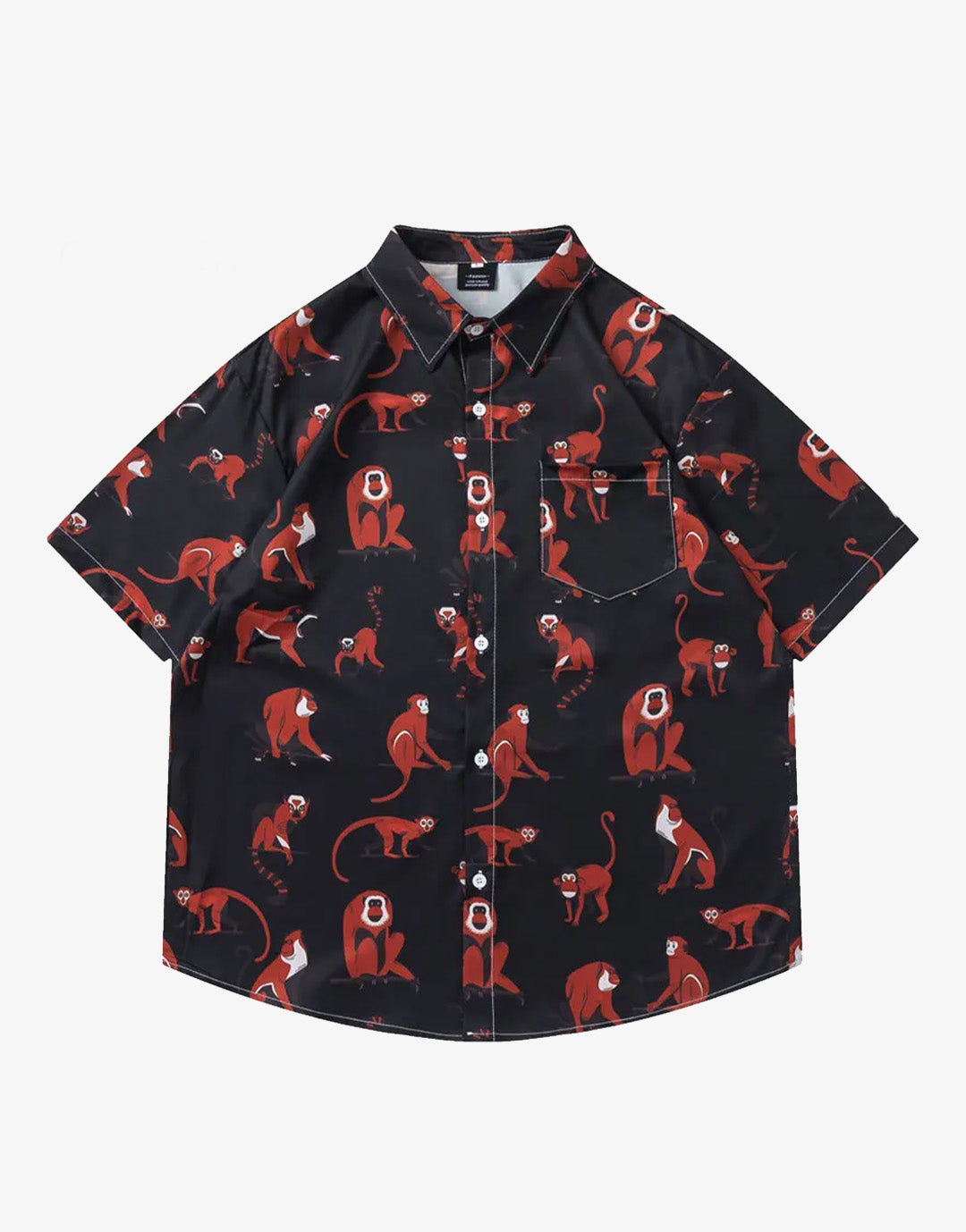
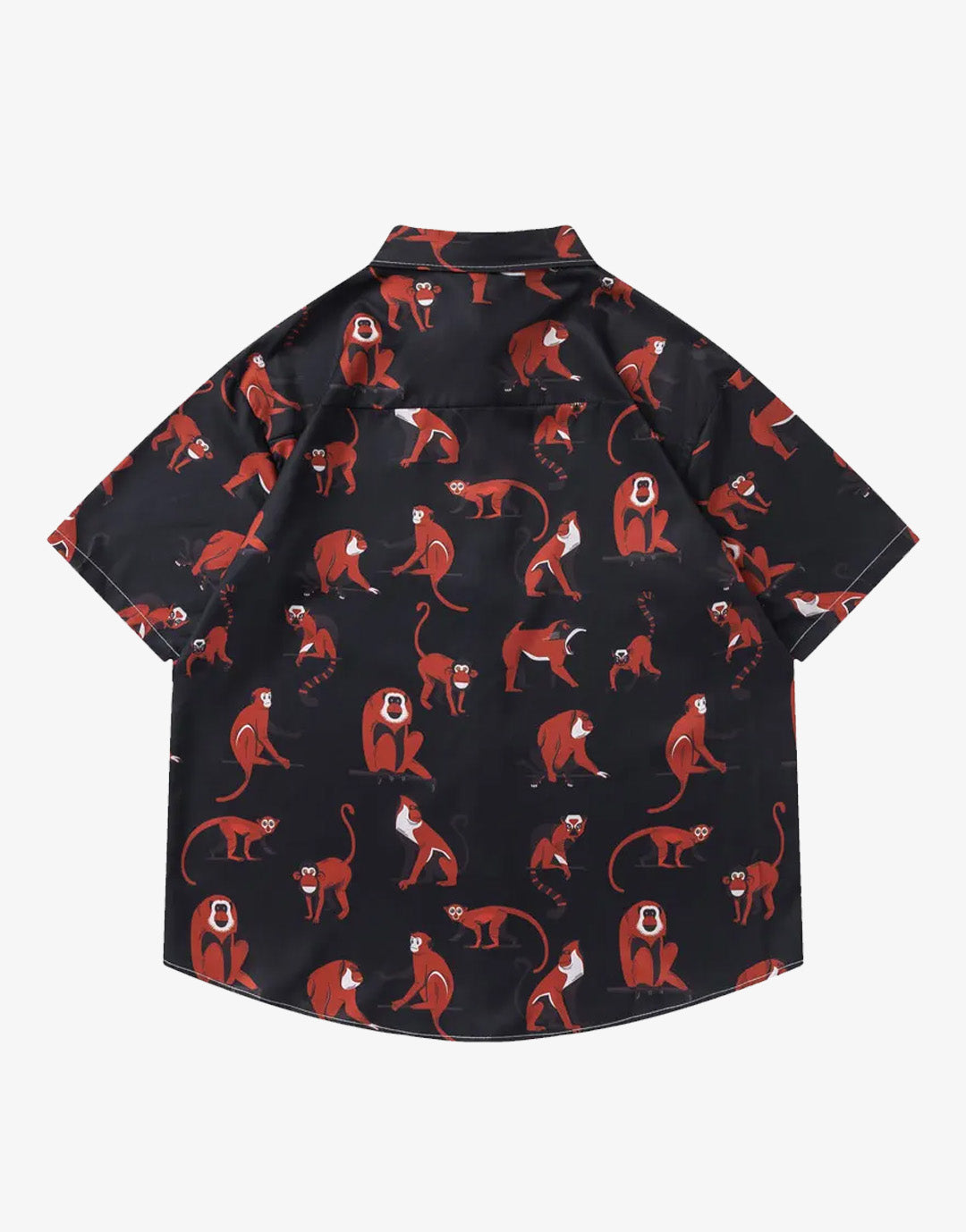
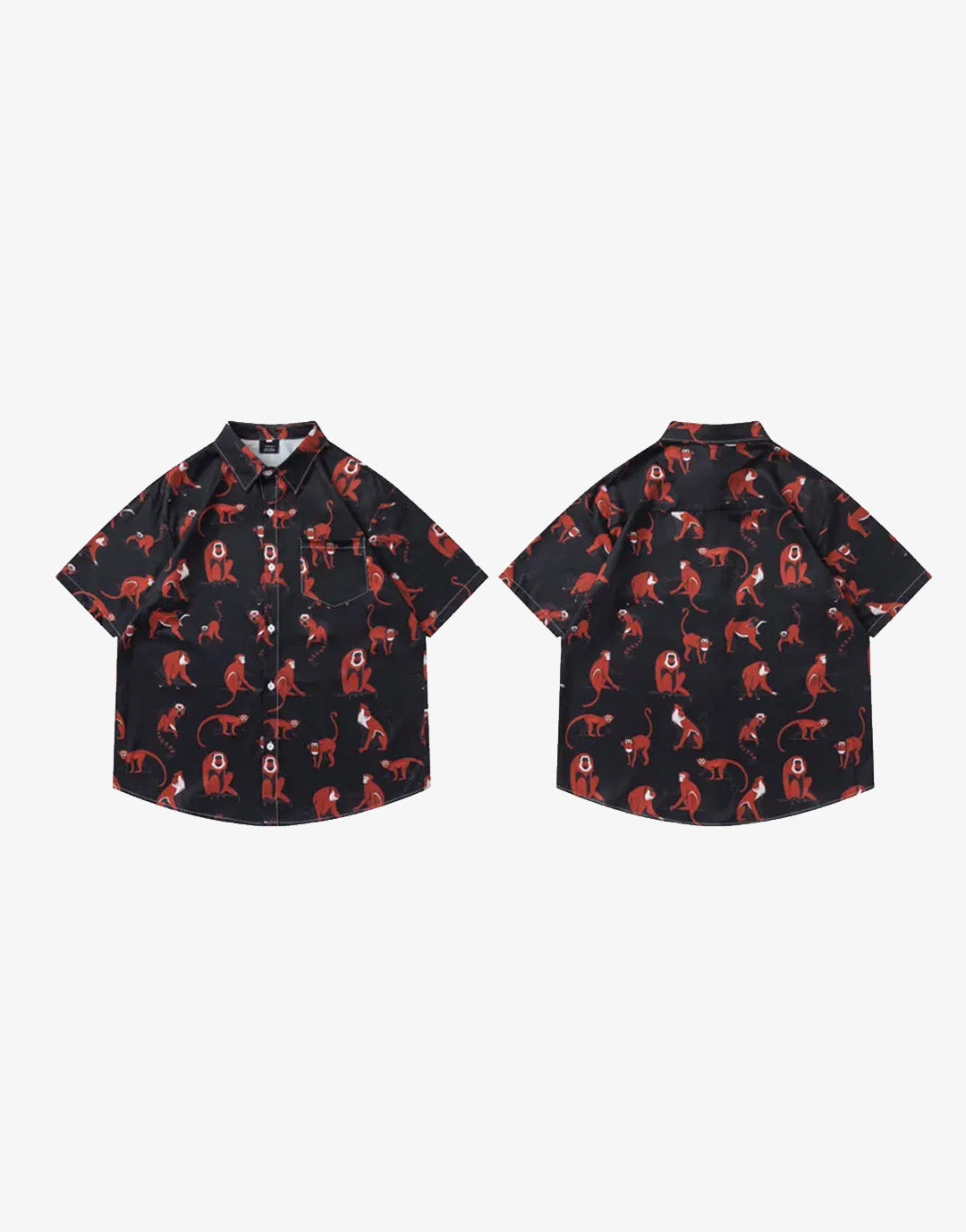
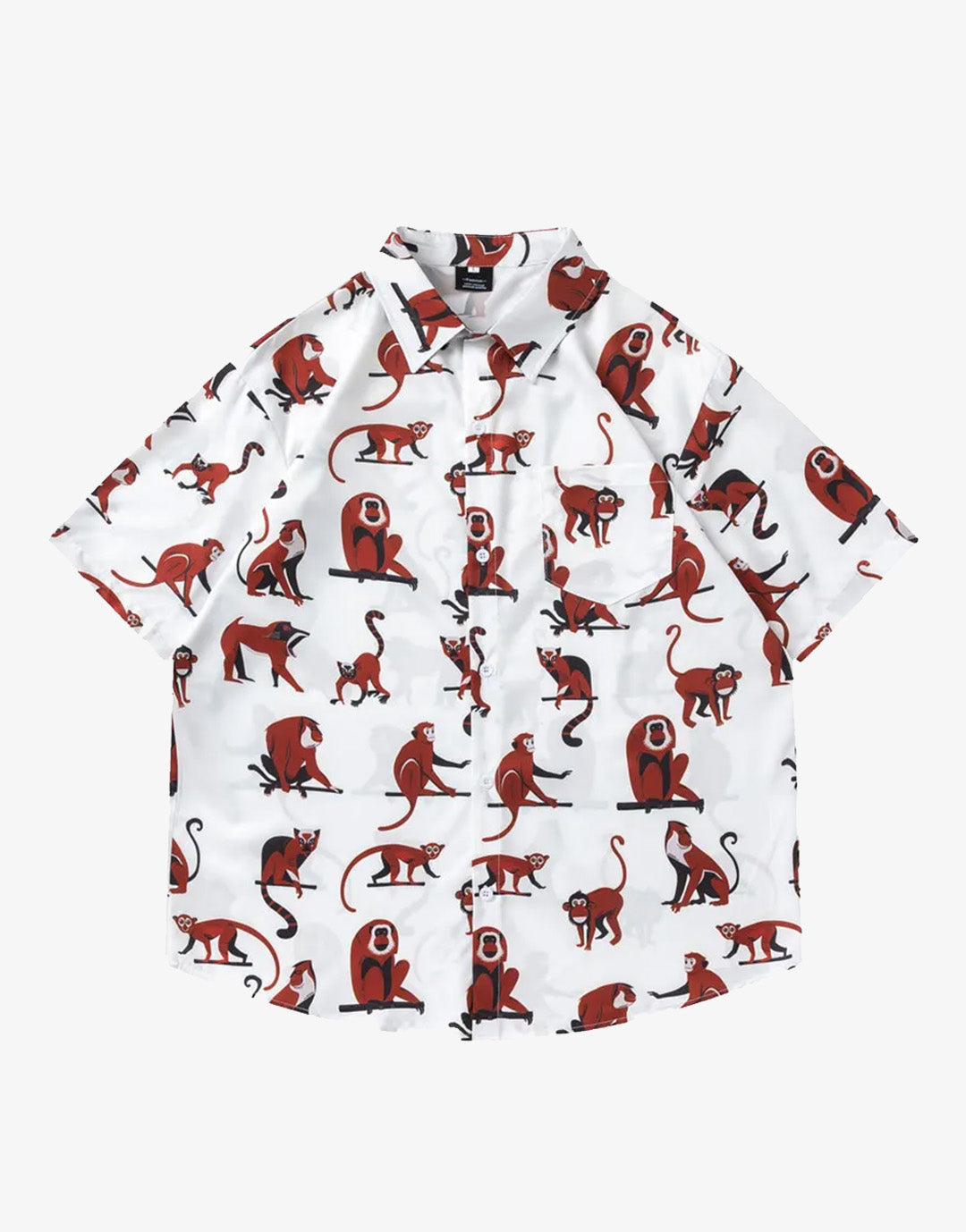
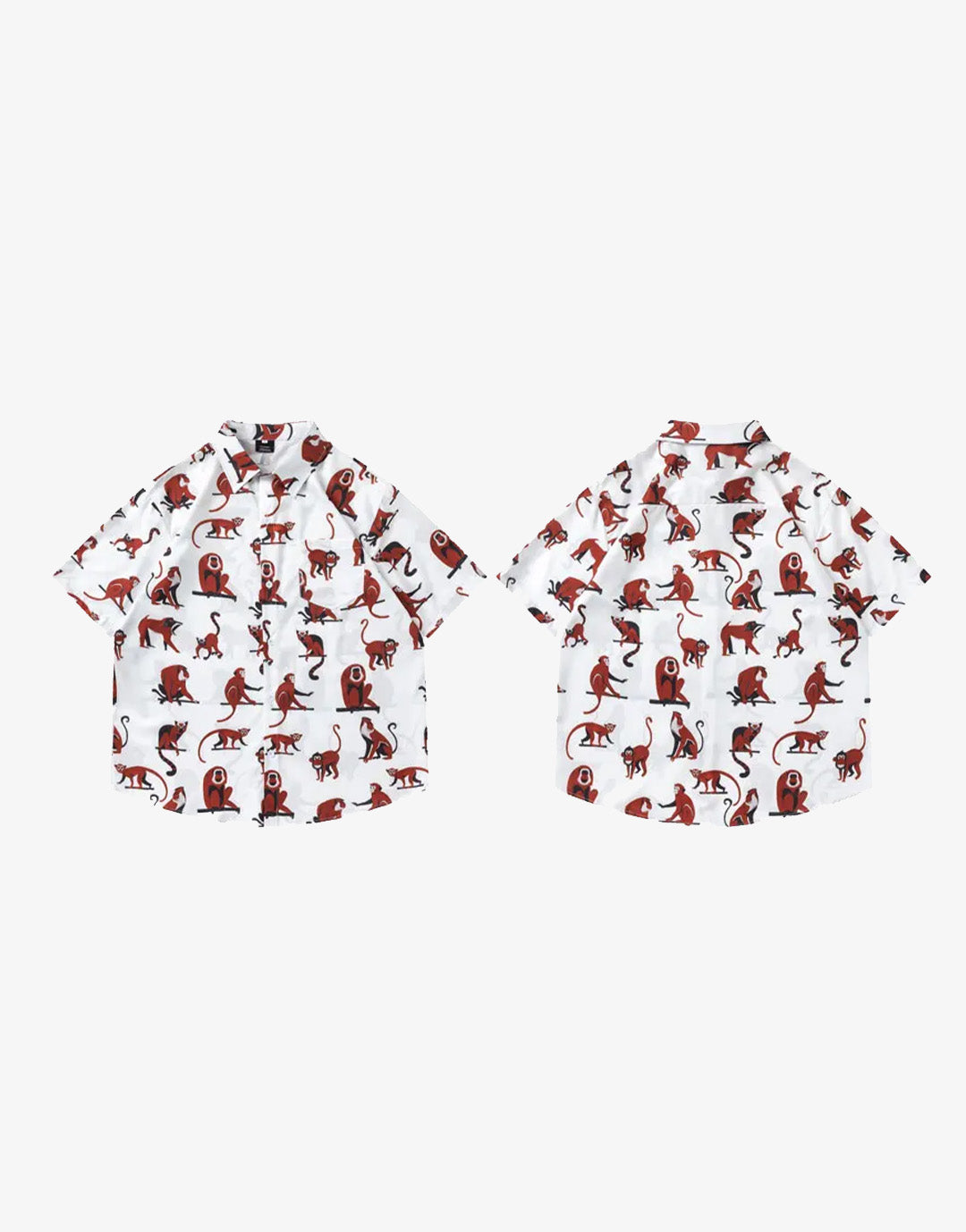
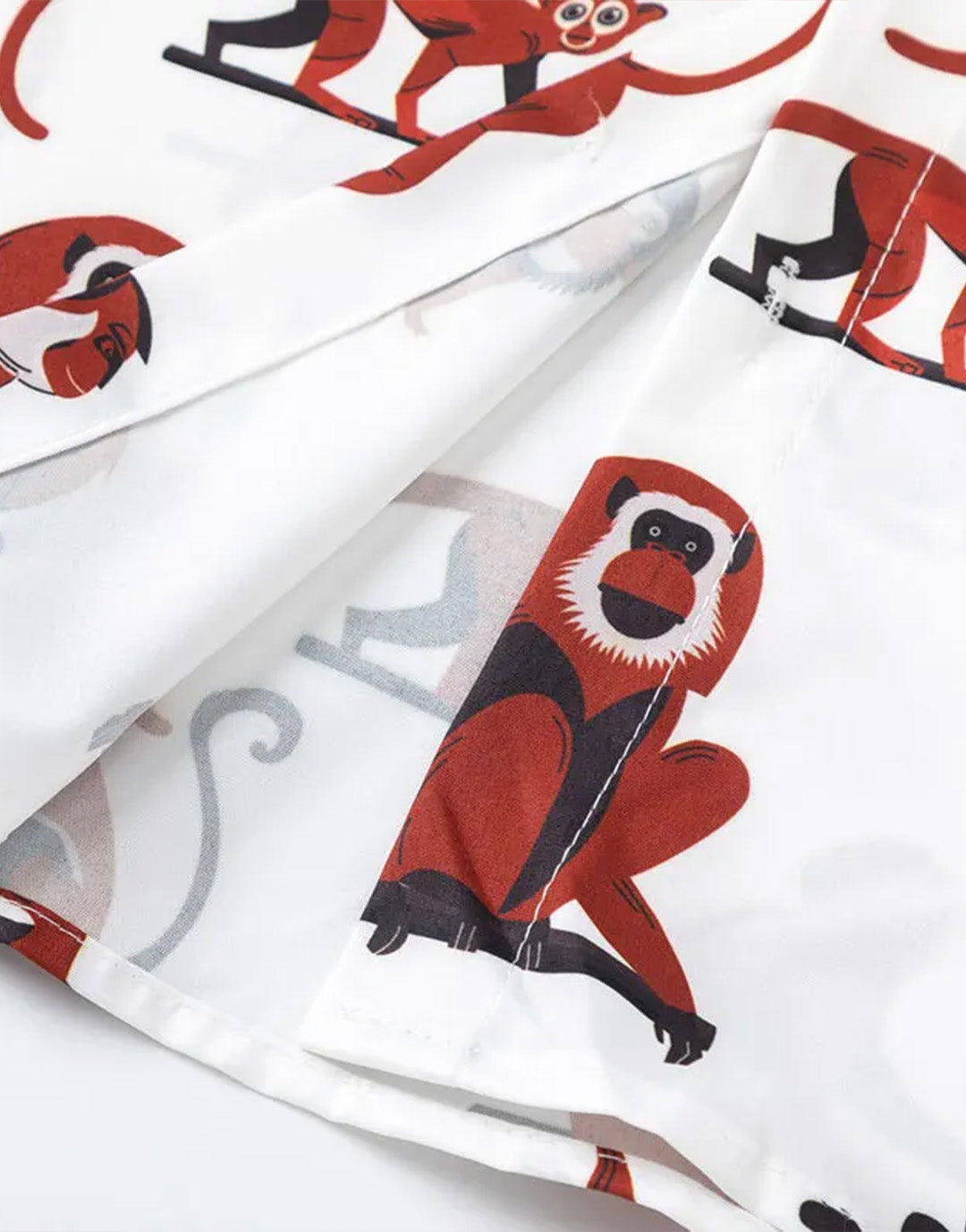
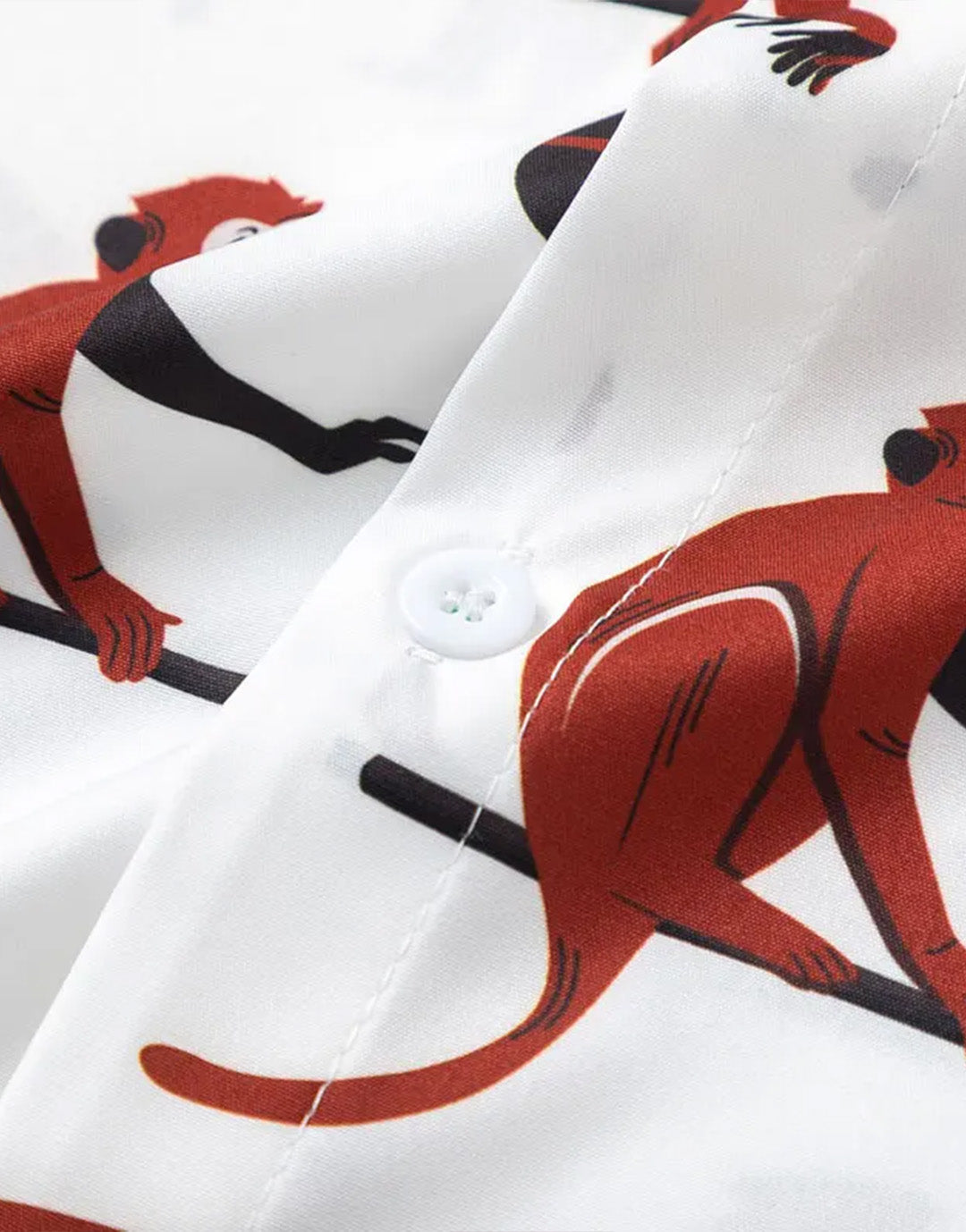
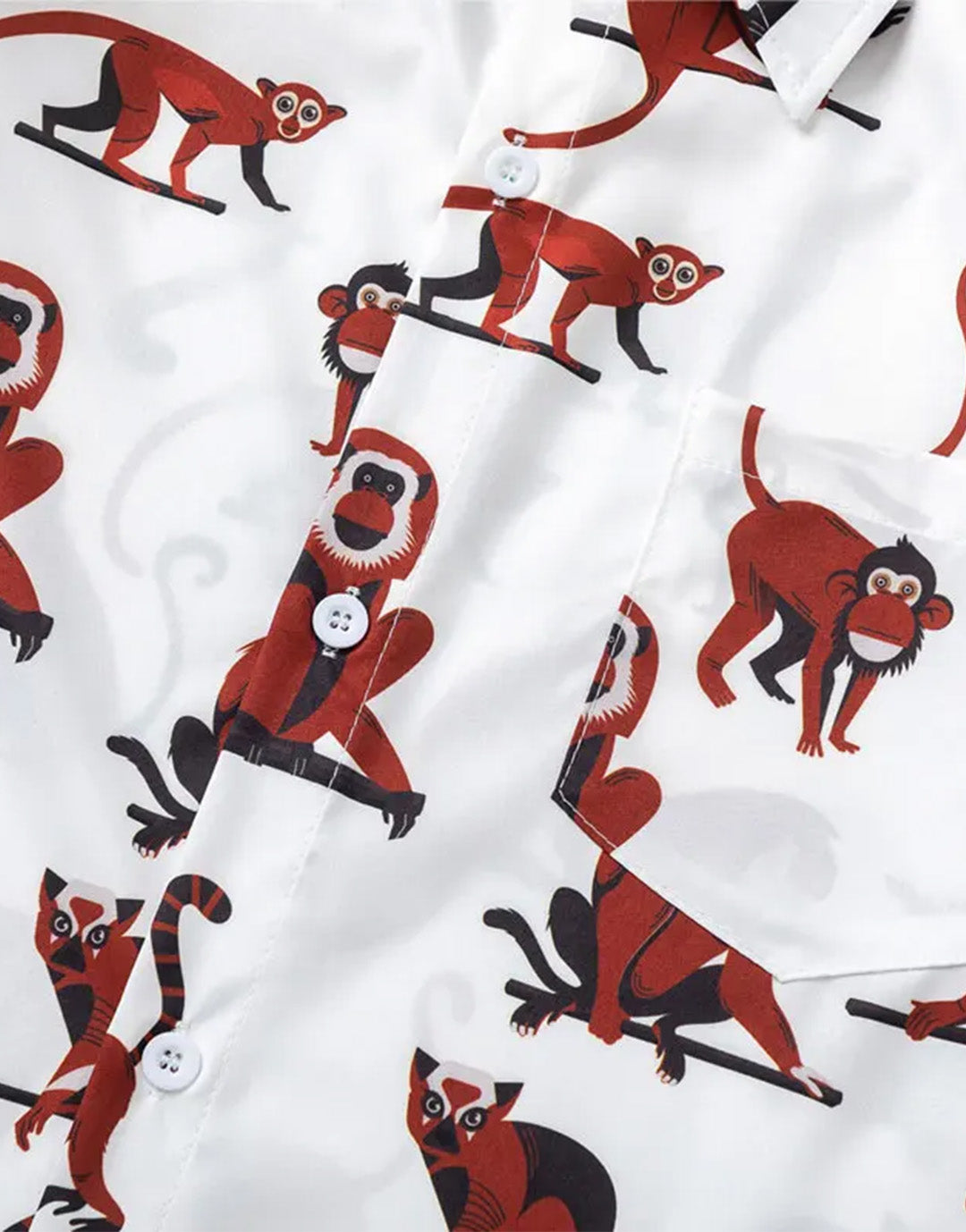
Y2K Monkey Shirt
Edition
Size



shipping
Return
payment
Somewhere in a thrift store, buried between sequined crop tops and oversized denim jackets, a relic from a distorted timeline waits. Its fabric is marked by the remnants of a digital rebellion, its bold, mischievous monkey print grinning like it knows something we don’t. A whisper from an alternate past—or a future rewritten.
Because back in the early 2000s, when the world feared the great Y2K bug, an unexpected uprising brewed in pop culture: one where monkeys ruled the digital jungle, from cinema screens to fashion runways, leaving their untamed energy imprinted on an era of chaos and cyber-futurism.
It wasn’t just a time of technological paranoia; it was a renaissance of the primal. The millennium bug threatened to erase data, reset networks, and push us into a digital dark age. Meanwhile, sci-fi blockbusters like Planet of the Apes (2001) painted visions of a world where nature, in its most unpredictable form, had reclaimed its throne.
The fear of losing control over our own creations—of technology turning against us—was everywhere, mirrored in the music of Gorillaz, whose virtual monkey-fronted band fused hip-hop, punk, and electronica into a glitchy, genre-defying anthem for the age. Streetwear, always in sync with rebellion, embraced this simian takeover with playful, defiant graphics, birthing the Y2K Monkey Shirt as a mischievous emblem of an era that refused to be tamed.
So, what makes this shirt more than just a piece of nostalgia? It’s a manifesto woven in fabric, a reminder of an era where boundaries between organic and digital blurred, where every fashion statement carried the energy of a world unsure if it was spiraling into chaos or breaking free.
With its bold, cartoonish primate—part street-punk, part cyber renegade—it captures the essence of Y2K maximalism: loud, unpredictable, and unafraid to make a statement. But how did this monkey-printed piece become an icon of its time? And why does it still hold power today? Let’s decode the enigma of the Y2K Monkey Shirt—a garment that, much like the cyber-rebellions of the past, refuses to fade into obscurity.
When the digital age met the jungle: the untamed legacy of the Y2K Monkey Shirt
Somewhere in a neon-lit thrift store, buried between sequined crop tops and oversized denim jackets, a relic from a distorted timeline waits. Its black fabric, glossy and smooth, is alive with movement—bold, crimson monkeys sprawled in chaotic harmony, their mischievous eyes glinting like flickering pixels on an old CRT screen.
This is more than just a shirt. It’s a cipher, a message left behind by an era when fashion embraced the absurd, the playful, and the unpredictable. Back in the early 2000s, when the world feared the great Y2K error, an unexpected uprising took place in pop culture: one where monkeys ruled the digital jungle, swinging from cinema screens to streetwear collections, leaving their wild energy imprinted on the fashion scene.
It wasn’t just a time of technological paranoia; it was a renaissance of the primal. The millennium bug threatened to erase data, reset networks, and plunge us into a digital blackout. Meanwhile, sci-fi blockbusters like Planet of the Apes (2001) painted visions of a world where nature, in its most untamed form, reclaimed dominion over man’s technological empire.
At the same time, 12 Monkeys (1995) spun a hauntingly similar tale—one where a devastating virus nearly wiped out humanity, forcing survivors to live underground while the surface world became a lawless jungle.
The film’s eerie imagery of urban decay, cryptic symbols, and, of course, its chaotic monkey motif resonated with an audience already primed to fear a Y2K-induced collapse. Just like these cinematic visions, fashion in the early 2000s reflected this tension between high-tech aspirations and a primal instinct to survive, giving rise to bold, animalistic motifs woven into the very fabric of streetwear.
The fear of losing control over our own creations—of AI surpassing human intelligence, of chaos overtaking order—was everywhere. And in the midst of this, fashion did what it does best: it mirrored the moment. The monkey motif became a mischievous symbol of rebellion against sterile futurism. It was the aesthetic equivalent of a glitch in the system, a cheeky smirk in the face of digital dystopia.
So, what makes this shirt more than just a nostalgic throwback? It’s a manifesto woven in fabric, a reminder of an era where organic instincts clashed with cyber dreams, where fashion was both a playground and a warning.
The crimson monkeys sprawled across its silky black canvas are more than decoration—they are avatars of Y2K’s chaotic, maximalist spirit. But how did this graphic-laden piece become an icon of its time? And why does it still hold power today? Let’s decode the enigma of this Y2K Shirt—a garment that, like the streetwear culture it was born into, refuses to be tamed.
Y2K Shirts: From techno-futurism to primal rebellion: the cultural roots of the Monkey Y2K Shirt
The Y2K Monkey Shirt wasn’t born in isolation. It was a product of an era where fashion clashed with technology, where bold graphics, experimental prints, and ironic motifs became the visual language of a generation navigating the unknown.
At the turn of the millennium, digital aesthetics seeped into streetwear, fueled by underground subcultures blending hip-hop, punk, and techwear into something entirely new. The monkey motif wasn’t just random—it was a direct response to the chaotic energy of the time.
Think of the late 90s and early 2000s: MTV ruled the airwaves, dial-up modems screeched their way into cyberspace, and brands like Ecko, BAPE, and Maharishi infused streetwear with larger-than-life graphics and cultural storytelling.
The monkey—a creature that embodies both playfulness and defiance—became an emblem of Y2K maximalism. Whether in the mischievous smirk of the characters on this shirt or in the rise of brands like BAPE, which turned simian imagery into high-fashion streetwear, the primate represented a kind of digital-age tribalism: connected yet chaotic, modern yet primitive.
Pop culture, Y2K Music, and the rise of the monkey motif
Music and film only amplified the monkey’s reign. While Planet of the Apes envisioned a future where primates ruled a fallen civilization, Gorillaz—the world's first virtual band—crafted a soundscape that felt equally dystopian and playful.
Indeed, heir fusion of hip-hop, grunge, and cyber aesthetics resonated with a generation obsessed with the blurred lines between reality and simulation. Streetwear followed suit, leaning into loud, graphical prints that felt as anarchic as the culture that birthed them.
The Y2K Monkey Shirt captures this energy perfectly. It’s both a parody of high fashion and an homage to underground rebellion. Its oversized, silky silhouette feels effortlessly relaxed, yet the aggressive, all-over monkey print injects a boldness that refuses to be ignored. Whether worn by skate kids in the early 2000s or revived today by Gen Z’s love of ironic vintage, this shirt thrives in its ability to stay relevant while remaining completely unapologetic.
